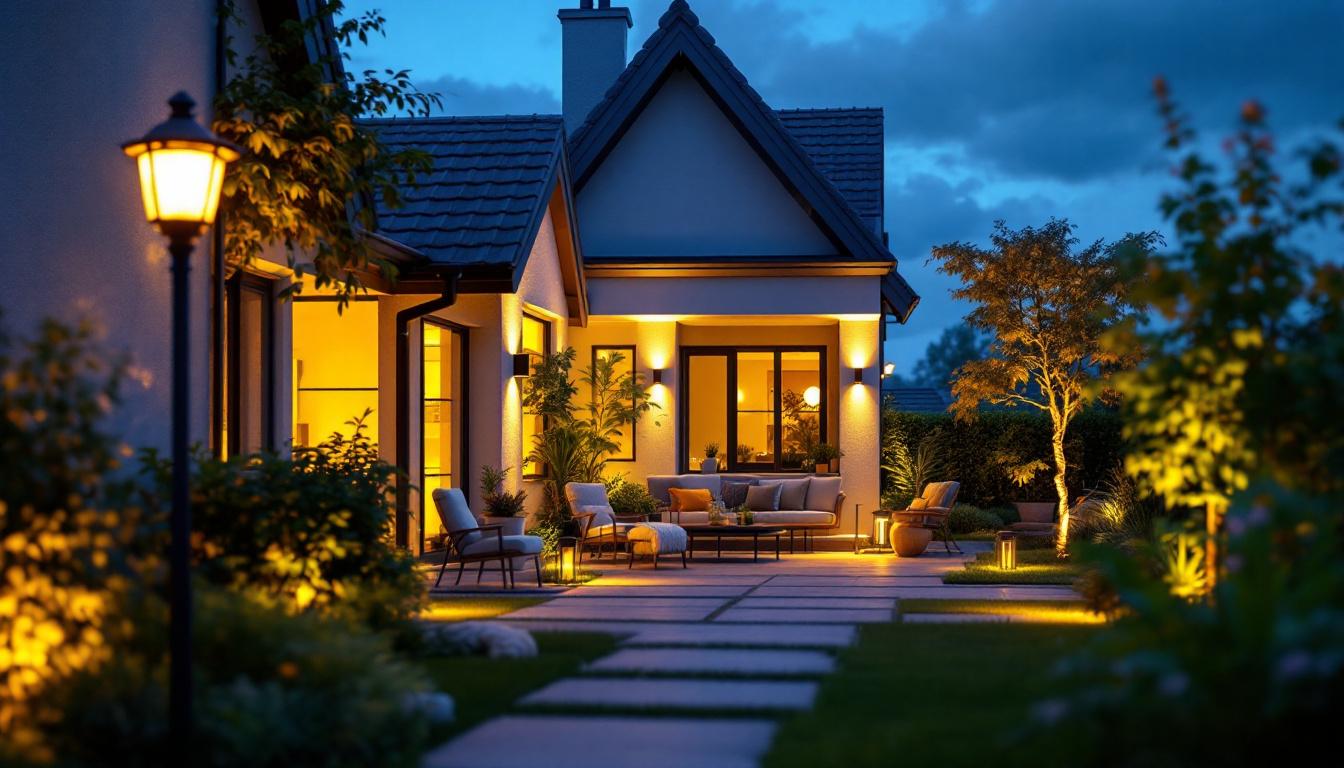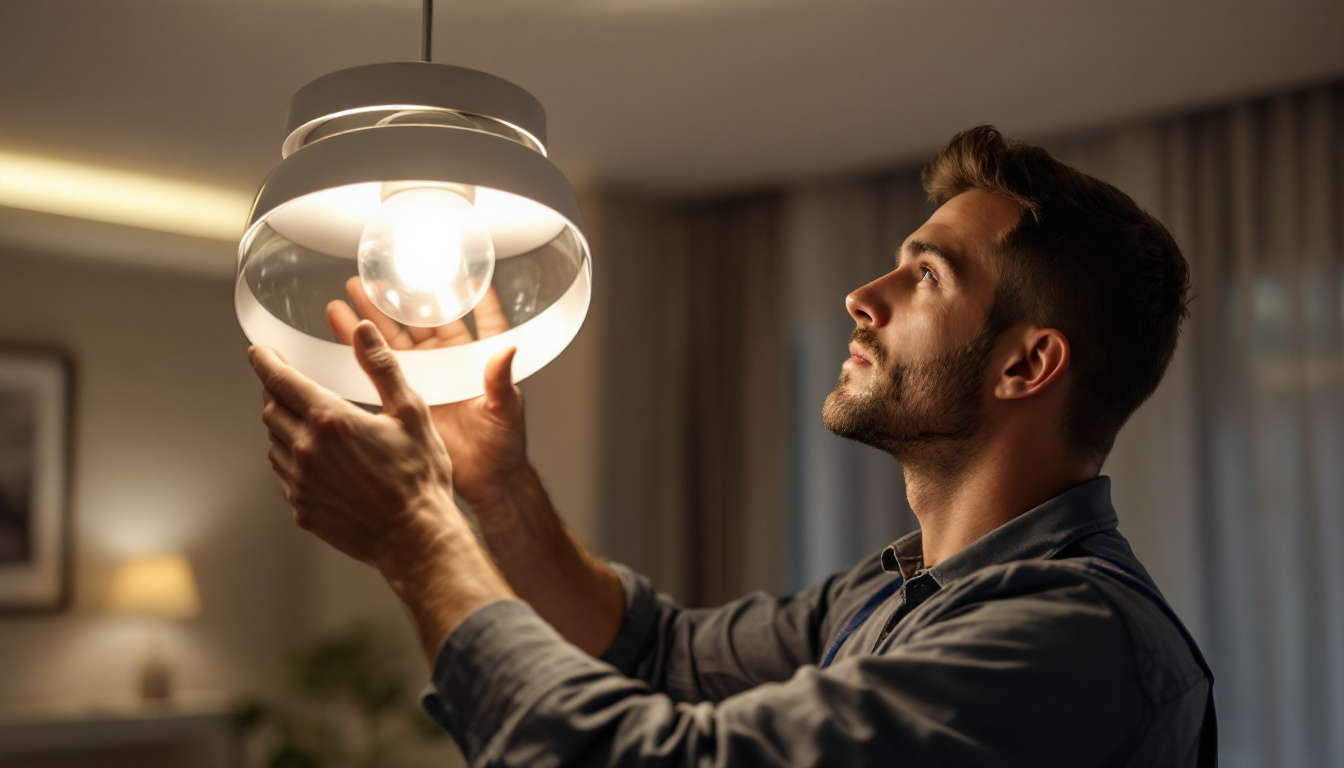
In the ever-evolving world of outdoor lighting, LED technology has emerged as a game-changer. As lighting contractors navigate the complexities of design, installation, and maintenance, understanding the nuances of exterior LED lighting is essential. This article delves into insights shared by industry experts, providing valuable information that can enhance both the quality of work and client satisfaction.
LED lighting has transformed the landscape of outdoor illumination, offering numerous benefits that appeal to both contractors and clients. From energy efficiency to longevity, these lights are becoming the go-to choice for exterior applications.
One of the most compelling advantages of LED lights is their energy efficiency. Unlike traditional incandescent bulbs, which convert a significant amount of energy into heat, LEDs utilize a much higher percentage of energy for light production. This efficiency translates into lower electricity bills for clients and a reduced carbon footprint, making it an attractive option for environmentally conscious consumers.
Moreover, the ability to integrate LED fixtures with smart technology allows for further energy savings. Timers and motion sensors can be employed to ensure that lights are only on when needed, which is particularly beneficial for outdoor spaces that may not require constant illumination. This smart integration can also enhance security, as lights can be programmed to turn on at dusk or when motion is detected, providing peace of mind for homeowners.
LED lights boast an impressive lifespan, often lasting up to 25,000 hours or more. This longevity means fewer replacements for contractors and less maintenance for clients. The durability of LED fixtures is another significant advantage; they are typically resistant to shock, vibration, and extreme weather conditions, making them ideal for outdoor installations.
Contractors can assure clients that investing in LED lighting is not just a short-term solution but a long-term investment that will pay off over time. The reduced frequency of replacements and maintenance work can lead to increased customer satisfaction and loyalty. Additionally, many LED products are designed with advanced thermal management systems, which help dissipate heat more effectively, further extending their lifespan and maintaining optimal performance even in challenging environments.
Furthermore, the versatility of LED lighting allows for creative applications in exterior design. From accent lighting that highlights architectural features to pathway illumination that enhances safety and aesthetics, LEDs can be tailored to fit various styles and preferences. This adaptability not only improves the visual appeal of outdoor spaces but also encourages homeowners to explore innovative lighting solutions that reflect their personal taste and lifestyle.
When it comes to designing outdoor lighting systems, several factors must be considered to ensure both functionality and aesthetics. Expert lighting contractors emphasize the importance of a well-thought-out design that complements the architecture and landscape of the property. An effective lighting design not only illuminates spaces but also enhances safety and security, making it a crucial element in any outdoor environment.
Before selecting fixtures, it is crucial to assess the specific needs of the space. Factors such as the size of the area, the intended use, and the surrounding environment play a significant role in the design process. For instance, a pathway may require different lighting solutions compared to a patio or garden area. Understanding the flow of foot traffic and the activities that will take place in these areas can help determine the appropriate brightness levels and fixture placements.
Contractors should also consider the existing features of the landscape. Highlighting trees, sculptures, or architectural elements can create a stunning visual effect, enhancing the overall ambiance of the outdoor space. Proper planning ensures that lighting is not only functional but also enhances the beauty of the property. Moreover, incorporating smart lighting technology can allow homeowners to adjust brightness and color settings, providing versatility for different occasions, whether it’s a cozy family gathering or a vibrant outdoor party.
The selection of fixtures is a critical aspect of the design process. With a wide variety of LED options available, contractors must choose fixtures that align with the aesthetic goals of the project while meeting practical requirements. From wall-mounted sconces to in-ground lights and string lights, the options are vast. Each type of fixture serves a unique purpose, and understanding these can help in creating a layered lighting effect that adds depth and interest to the outdoor space.
Additionally, color temperature plays a vital role in the overall effect of the lighting. Warmer tones can create a cozy atmosphere, while cooler tones may be more suitable for modern, sleek designs. Understanding the desired mood of the space can guide fixture selection and placement. Furthermore, the use of dimmable LED fixtures can enhance flexibility, allowing homeowners to adjust the lighting intensity based on the time of day or the nature of the event. This adaptability not only contributes to the aesthetic appeal but also promotes energy efficiency, making it a win-win for both design and sustainability.
Proper installation of exterior LED lighting is essential for achieving optimal performance and longevity. Expert contractors share several best practices that can help ensure a successful installation process.
Before beginning the installation, creating a detailed layout plan is crucial. This plan should include the placement of each fixture, wiring routes, and any necessary power sources. A well-thought-out layout minimizes the risk of errors during installation and helps ensure that the lighting is evenly distributed.
Contractors should also consider the accessibility of fixtures for future maintenance. Placing lights in easily reachable locations can save time and effort when replacements or repairs are necessary. Additionally, it’s important to take into account the aesthetic appeal of the layout. Thoughtful positioning can enhance the overall ambiance of the outdoor space, highlighting architectural features or landscaping elements. Utilizing software tools for 3D modeling can provide a visual representation of how the lighting will look, allowing for adjustments before installation begins.
Safety should always be a top priority during installation. Contractors must adhere to local electrical codes and regulations to ensure that the installation is safe and compliant. This includes using appropriate wiring, junction boxes, and weatherproof fixtures to protect against the elements.
Furthermore, utilizing proper grounding techniques and surge protection can prevent damage to the lighting system and enhance its longevity. Educating clients about the importance of safety measures can also build trust and confidence in the contractor’s expertise. Additionally, it’s advisable to conduct a thorough risk assessment of the installation site. Identifying potential hazards, such as proximity to water sources or high traffic areas, allows for the implementation of preventative measures that can mitigate risks. Regular training and updates on safety protocols for the installation team can further ensure that best practices are consistently followed, fostering a culture of safety and professionalism throughout the project.
Even though LED lights are known for their durability, regular maintenance is still essential to ensure optimal performance. Contractors should be prepared to offer guidance on maintenance practices and troubleshooting common issues.
Conducting regular inspections of outdoor lighting systems can help identify potential issues before they become significant problems. This includes checking for any signs of wear and tear, ensuring that fixtures are clean, and verifying that all connections are secure.
Encouraging clients to perform routine checks can prolong the life of the lighting system and maintain its effectiveness. Providing a maintenance schedule can also be a valuable service that contractors can offer to their clients.
Despite their reliability, LED lights can sometimes experience issues such as flickering, dimming, or complete failure. Contractors should be equipped with troubleshooting techniques to address these problems efficiently.
Common causes of flickering may include loose connections, incompatible dimmers, or voltage fluctuations. Educating clients on these potential issues can empower them to take action before calling for professional assistance, ultimately enhancing their satisfaction with the service provided.
The field of exterior LED lighting is constantly evolving, with new innovations emerging regularly. Staying informed about these advancements can help contractors remain competitive and offer cutting-edge solutions to their clients.
Smart lighting technology has gained significant traction in recent years, allowing for greater control and customization of outdoor lighting systems. Features such as remote access, programmable schedules, and integration with home automation systems provide clients with enhanced convenience and flexibility.
Contractors can capitalize on this trend by offering smart LED solutions that cater to the needs of tech-savvy clients. Demonstrating the benefits of smart lighting, such as energy savings and improved security, can help close sales and elevate the contractor’s reputation.
Another exciting development in exterior lighting is the rise of solar-powered LED fixtures. These environmentally friendly options harness solar energy during the day, providing illumination at night without relying on traditional power sources.
Solar-powered lights are particularly appealing for remote areas or locations where running electrical wiring may be challenging. Contractors can educate clients about the benefits of solar lighting, including reduced energy costs and minimal installation requirements, making it an attractive option for many outdoor projects.
As the demand for exterior LED lighting continues to grow, lighting contractors must stay informed and adapt to the changing landscape of the industry. By understanding the advantages of LED technology, implementing effective design strategies, adhering to installation best practices, and keeping up with innovations, contractors can provide exceptional service and meet the diverse needs of their clients.
Incorporating these insights into daily operations can lead to increased client satisfaction, repeat business, and a solid reputation in the competitive field of lighting contracting. With a commitment to quality and a focus on innovation, contractors can illuminate outdoor spaces in ways that enhance both functionality and beauty.
Ready to elevate your lighting projects with the most efficient, durable, and innovative LED solutions? Look no further than LumenWholesale, where we specialize in providing contractors with spec-grade lighting products at unbeatable wholesale prices. Say goodbye to local distributor markups and hello to a vast selection of premium lighting that meets rigorous industry standards. With LumenWholesale, you can enjoy the convenience of bulk buying with free shipping, ensuring you get the best value without any hidden costs. Make your next project shine with confidence and cost-effectiveness. Discover the perfect blend of quality, affordability, and convenience by visiting Wholesale Lighting at the Best Value today.

Explore the essential insights lighting contractors need to meet client expectations in “Lotus Light.” Discover key trends, client preferences, and expert tips to illuminate your projects with precision and creativity..

Discover how 4 ft LED shop lights can transform your lighting projects and secure more contracts.

Discover essential tips for lighting contractors on selecting and installing ceiling lamp fixtures.

Discover the must-have wiring tools every lighting professional needs in their toolkit.